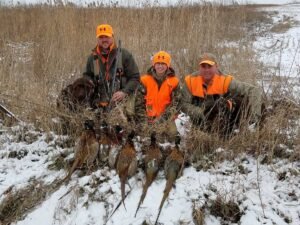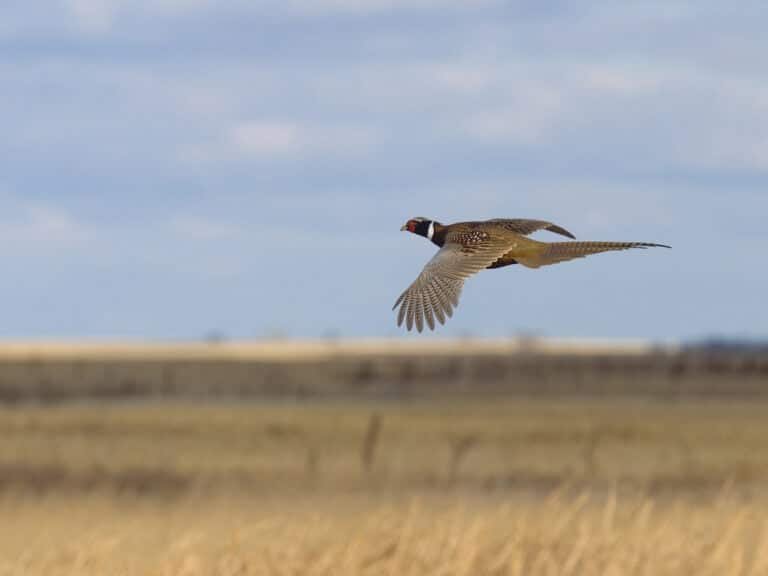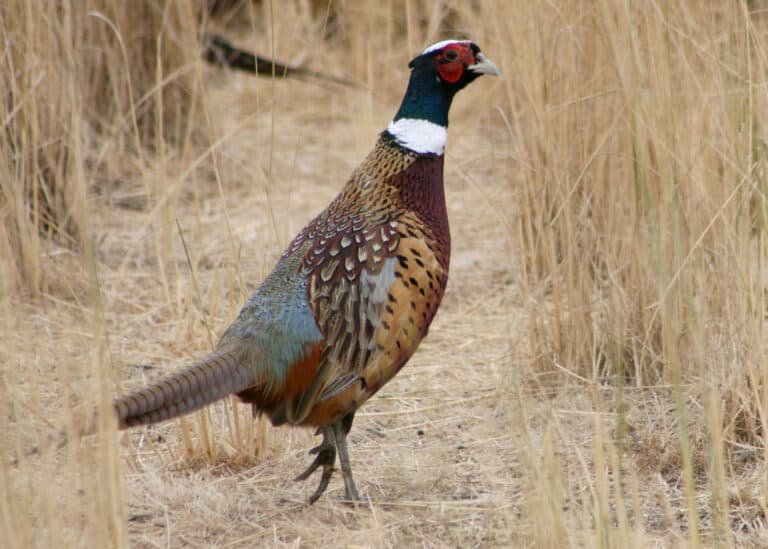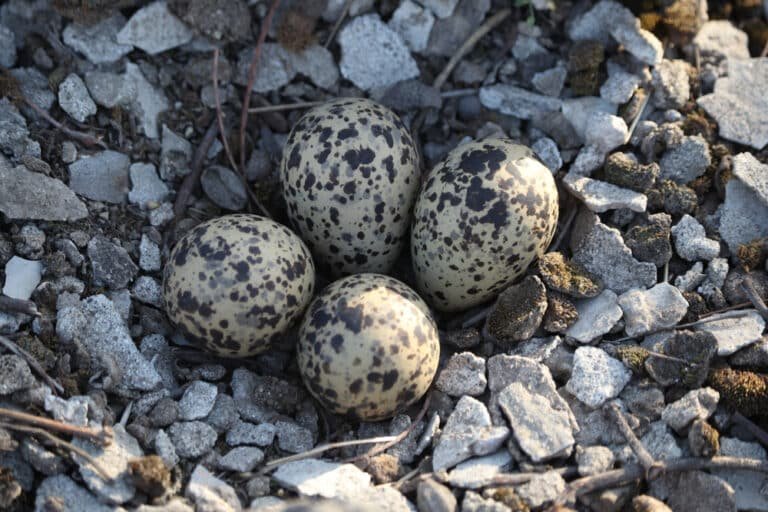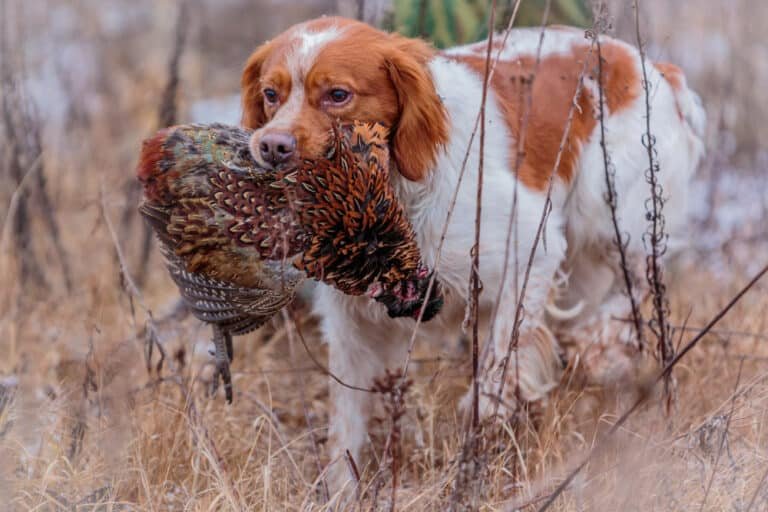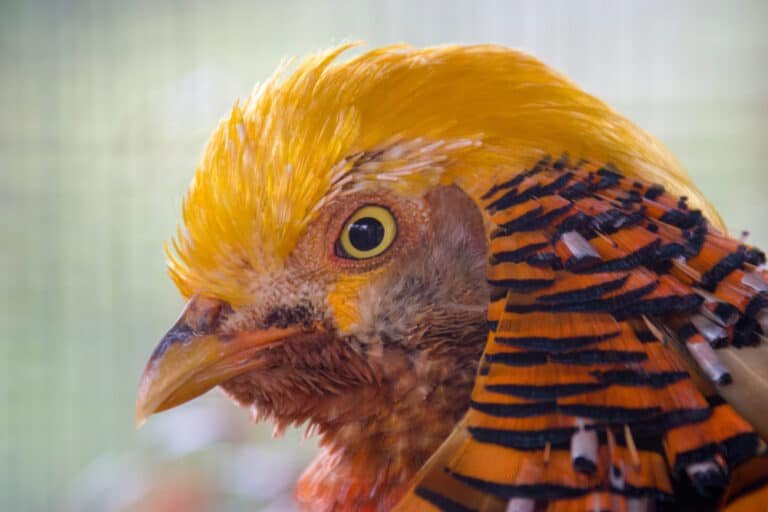The Ultimate Guide to Training Your Pheasant Hunting Dog
Pheasant hunting, an exhilarating sport enjoyed by hunters worldwide, combines the thrill of the chase with the art of shooting. This age-old tradition has captivated individuals for centuries as they seek to outwit and outmaneuver their feathered quarry. In this blog we will discuss pheasant hunting dogs training.
Pheasants, known for their vibrant plumage and elusive nature, provide a challenging target that tests the skill and patience of even the most seasoned athletes. The popularity of pheasant hunting continues to grow due to its accessibility and unique blend of excitement and camaraderie.
Brief Overview of Pheasant Hunting
Originally introduced from Asia in the late 18th century, pheasants quickly became one of North America’s premier game birds. These ground-dwelling creatures are renowned for their ability to burst into flight with explosive speed at a moment’s notice.
Their flight patterns present hunters with unpredictable challenges that demand quick reflexes and sharp aim. Pheasant hunting typically occurs in expansive fields or carefully managed habitats where these birds find cover amidst grasses, croplands, or shrubbery.
Popularity of Pheasant Hunting
The allure of pheasant hunting lies not only in its strategic aspects but also in its social dimension. Gatherings of friends or family members set off on these adventures together, forging lasting memories while pursuing a shared passion for the outdoors.
The thrill of watching well-trained hunting dogs work diligently to locate and flush out these elusive birds creates an atmosphere teeming with anticipation. However, it is crucial to recognize that success in pheasant hunting hinges greatly on the quality and training of the canine companions accompanying hunters into the field.
Importance of Well-Trained Hunting Dogs
When maximizing success in pheasant hunting endeavors, having a well-trained hunting dog by one’s side is indispensable. These skilled animals possess an innate aptitude for locating, flushing, and retrieving game birds, considerably enhancing the hunter’s chances of a successful harvest. Well-trained hunting dogs exhibit remarkable obedience and discipline, allowing hunters to maintain control over their positions and movements.
Their ability to follow commands swiftly and accurately ensures safety amidst the excitement of the hunt. A disciplined hunting dog also minimizes the risk of spooking birds prematurely or inadvertently disturbing other nearby wildlife’s sense of scent, enabling it to pinpoint hidden phe\asants with uncanny accuracy. Their innate tracking abilities and intuitive understanding of the terrain make them invaluable assets in locating these wily birds in dense covers or vast fields.
Pheasant hunting remains a cherished pastime that continues to captivate enthusiasts around the globe. The presence of well-trained hunting dogs significantly enhances the exhilaration that comes from pursuing these colorful game birds.
These loyal companions contribute to maximizing success and add immeasurable joy and camaraderie to each hunt. To enjoy this sport fully, hunters must invest time and effort into effectively training their canine partners.Pheasant Hunting Dogs Training
Types of Pheasant Hunting Dogs
Retrievers (Labrador Retrievers, Chesapeake Bay Retrievers)
Retrievers, such as Labrador Retrievers and Chesapeake Bay Retrievers, are renowned for their exceptional skills in retrieving downed birds. These dogs possess an instinct to retrieve and have been bred over generations for their innate ability to retrieve game from land or water. Their strong build, webbed paws, and water-resistant coats make them excellent swimmers, allowing them to navigate through marshes and ponds to retrieve fallen pheasants effortlessly.
Additionally, retrievers are highly trainable and versatile in various hunting terrains. Their intelligence and eagerness to please make them adaptable to diverse hunting scenarios, whether open fields or dense covers.
Pointers (German Shorthaired Pointers, English Setters)
Pointers are highly esteemed for their exceptional scenting abilities and are vital in locating hidden pheasants during hunting expeditions. German Shorthaired Pointers and English Setters are among the most popular breeds in this category. These dogs possess an instinct to detect scents with utmost precision, enabling them to track down birds concealed under thick cover or within fields of tall grasses.
Apart from their remarkable scenting abilities, pointers exhibit a unique behavior known as “pointing.” When they pick up the scent of a bird, they freeze in a position that directs hunters toward the bird’s location. This steadfast behavior helps hunters approach undetected while lining up their shots.
Springer Spaniels excel at flushing out pheasants from dense vegetation or cover during hunts. These possess an instinct to drive game birds into the air, making them ideal companions for those hunting in areas with thick brush or heavy cover.
Their compact size and skill allow them to navigate through dense vegetation without causing an excessive disturbance, ensuring a higher chance of flushing out pheasants without driving them too far away. Flushers are valued for their ability to work diligently within proximity to hunters, allowing for an enhanced hunting experience and increased successful opportunities.
Retrievers bring impeccable retrieval skills and trainability to the table, pointers showcase exceptional scenting abilities and pointing behavior, while flushers impress with their agility and efficiency in dense vegetation. Each type of pheasant hunting dog offers unique qualities that contribute to a successful hunting experience.

Basic Training Techniques for Pheasant Hunting Dogs
Obedience Training
Obedience training forms the cornerstone of any well-rounded pheasant hunting dog. By teaching basic commands such as sit, stay, heel, and recall, owners can establish a strong foundation for advanced training.
These commands provide essential control over dogs in the field, ensuring they remain focused and responsive to their handler’s instructions. The “sit” command teaches dogs to maintain a stationary position until given further directions.
“Stay” instills discipline and patience by requiring dogs to remain in place until released. “Heel” educates them to walk calmly at their handler’s side, preventing distractions or unnecessary wandering.
“Recall” is crucial for calling dogs back promptly when needed. Consistency and positive reinforcement during obedience training contribute to a reliable and obedient hunting companion.
Socialization and Exposure to Birds
Introducing puppies to live birds early is vital for developing their natural prey drive and passion for retrieving game birds like pheasants. This process usually starts with introducing them to clipped wings or feathers from various bird species, stimulating their curiosity and desire to chase after feathered prey.
As they display interest or excitement towards these articles, handlers can gradually progress towards introducing live birds in controlled environments. This exposure should occur gradually so that young hunting dogs acclimate comfortably without initially becoming overly excited or overwhelmed by the presence of live birds.
To enhance socialization skills with different bird species and environments, it is essential to expose hunting dogs to various scenarios where they encounter different types of birds, such as pigeons or quail, while exploring diverse terrains like open fields or thick cover areas resembling pheasant habitats. The handler should carefully manage each exposure, ensuring safety while allowing the dog’s instincts to develop naturally.
By providing these experiences during socialization, hunting dogs become familiar with different bird scents, behaviors, and habitats. This familiarity establishes a solid foundation for more advanced training techniques such as scent work and fieldwork, enabling dogs to effectively locate, point, flush, and retrieve pheasants during hunting expeditions.
Advanced Training Techniques for Pheasant Hunting Dogs
Scent Training
Scent training plays a crucial role in developing a proficient pheasant-hunting dog. The first step is introducing the dog to scent articles like wings or feathers. These items carry the distinct scent of pheasants and help familiarize the dog with the odor they will encounter in the field.
Gradually, the trainer will encourage the dog to associate these scents with live birds. Using positive reinforcement techniques, such as treats and praise, the dog learns to recognize and differentiate between various scents, enabling them to locate pheasants precisely.
Field Work
Fieldwork is integral to advanced training for pheasant hunting dogs, focusing on honing their instincts and behaviors. For pointers, developing steady pointing behavior is crucial.
This involves teaching them to lock onto a bird’s scent, freeze in place, and maintain their position until given a command. On the other hand, flushers need to be trained in flushing behavior – charging through cover to startle birds into flight without actually catching them.
Staying within range requires discipline and control and working effectively alongside hunters. Additionally, encouraging marking skills helps dogs retrieve downed birds efficiently.
By utilizing dummy launches or live birds during training sessions, handlers can teach their dogs how to mark fallen targets accurately. This involves carefully observing where the bird lands and sending the dog on a marked line to retrieve it successfully.
Conclusion
Advanced training techniques are essential for shaping pheasant hunting dogs into skilled companions in the field. Through meticulous scent training, dogs become adept at recognizing and tracking pheasants by their distinct odors, improving success rates during hunts.
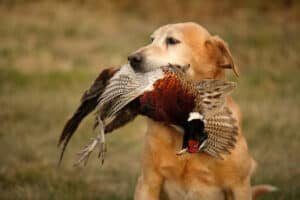
Furthermore, fieldwork refines instincts such as pointing or flushing behavior, ensuring that the dog works harmoniously with hunters to maximize efficiency. By investing time and effort into advanced training, dogs and hunters can embark on rewarding pheasant hunting adventures filled with exhilaration and triumph.

